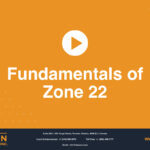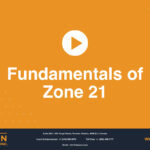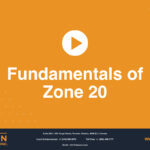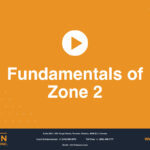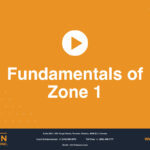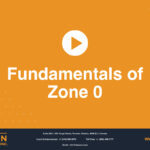Interpreting Hazardous Locations Markings for IECEx equipment
The marking of hazardous location electrical equipment known as Ex equipment may seem complex and confusing.
Markings are consistently applied to electrical devices that have been proven to be compliant with safety requirements defined in Standards.
When you break marking down to its separate parts, it all begins to make sense.
This presentation will focus on the markings of products approved under the IECEx scheme for use where gases are or may become present.
We can best explain markings by working through an example:
Ex ia IIC T4 Ga
Let’s look at each part.
“Ex” means explosion protected.
The equipment is to be used in an environment in which there are or may be ignitable or explosive gases, vapours, dusts or flyings.
Steps have been taken in the design of the device to ensure that an explosion cannot take place, or should one happen, it cannot spread to the hazardous environment.
The next part of the marking indicates the specific method of protection used, based on the relevant IEC Standard. “ia” is an example.
“i” stands for intrinsic safety. Like the other methods, intrinsic safety can be one of several levels: a, b, or c, for example. These specific levels of protection balance off the likelihood of an explosive environment being present against the probability of the occurrence of ignition.
“ia” means the product has been assessed for installation in Zone 0. “ib” is for Zone 1 and “ic” is for Zone 2. The IEC Standard for intrinsic safety is 60079-11.
There are 9 possible protection techniques, Lets review the other 8. “d” stands for explosion proof.
“db” products may be used in Zone 1 and dc in Zone 2. We should note that da can be used for Zone 0, but it is only used for catalytic sensors. The explosion proof protection technique is addressed in IEC Standard 60079-1.
“e” is for increased safety. A product with an eb marking means it is assessed for Zone 1. The “ec” marking is for Zone 2. The relevant IEC Standard is 60079-7.
Another protection technique is represented by the letter “p”, which means purging and pressurization. There are three variations on this marking: “pxb” for Zone 1, “pyb” again for Zone 1 and “pzc” for Zone 2. Purged equipment cannot be assessed for Zone 0. The relevant IEC Standard is 60079-2.
“n” generally means non-arcing. “nA” is known as non-sparking, “nC” is known as sealing and “nR” refers to a restricted breathing enclosure. These markings are based on the IEC Standard 60079-15.
“m” means that encapsulation is used as the protection technique. There are “ma” for Zone 0, “mb” for Zone 1 and “mc” for Zone 2. The standard on which this protection technique is based for IEC is 60079-18.
“q” is for powder filled equipment and allows a product to be installed in Zone 1. IEC Standard 60079-5 addresses this technique.
“o” means oil immersed equipment: “ob” for Zone 1 and “oc” for Zone 2. The IEC Standard is 60079-6.
Last but not least, is the protection technique for gases known as “op” which is used for equipment having optical radiation. There are “op is” for Zone 0 , 1 and 2, “op pr” for Zones 1 and 2 and “op sh” for Zones 0, 1 and 2.
This part of the marking indicates the type of hazard present in the environment where the device will be installed.
Gases in the IECEx scheme are all in Group II, further defined as IIC, IIB, or IIA.
Group IIC in the IEC scheme is the most ignitable. One gas has been chosen as the representative for each group. Acetylene is the representative gas for Group IIC, for example. Note that there is a Group IIB+H2 in our table. This group specifically refers to hydrogen.
The next part of the marking refers to the Temperature Class of the device. Temperature class refers to the maximum temperature the electrical apparatus might attain, under normal operation or fault conditions, depending the protection technique used.
There are six temperature classes: T6, T5, T4, T3, T2 and T1.
This information is critical because, given high temperatures, electrical devices can become a source of ignition. It would be catastrophic if a device with a T-code of T1 were installed where there are gases that can ignite when temperatures reach 300°C, for example.
The final part of the marking adds detail to the level of protection, EPL.
The assigned EPL indicates the likelihood that the equipment can become a source of ignition. The EPL of gases is always shown as G, EPL of dusts are shown as D, and of mines is shown as M. Our example indicates G, meaning that gases are involved.
Because Zones, by definition, indicate the nature of the hazard, there is a correlation between the Zone and the EPL.
An EPL of Ga refers to Zone 0. Gb dictates that the product must be installed in Zone 1 and Gc is for Zone 2.
Note that a product with an EPL of Ga can be installed in Zone 0, as well as Zone 1 and Zone 2. But we should remember that the product with an EPL of Gc cannot be installed in Zone 1 or Zone 2 due to the hazards involved. Similarly, a product marked with an EPL of Gb is not allowed to be installed in a Zone 0 but is safe to be installed in Zones 1 and 2.
Complex electrical products may require multiple protection techniques, all of which must be included in the markings.
This marking, for example, shows that the protection techniques used are intrinsic safety, explosion proof and increased safety.
The gas allowed to be present is group IIB and the maximum temperature rise of the device is T4, 135°C. Now the last important feature of the marking is the EPL Gb, which tells us that this product is permitted to be installed in a Zone 1 or Zone 2 area. Given this marking, we should remember that this device may not be used in a zone 0 hazardous environment.
In summary, markings on electrical devices for use in hazardous locations convey very important details.
They are critical to:
- the end user to purchase the correct equipment for a specific application
- the installer to install the equipment correctly
- The Authority Having Jurisdiction to inspect, approve and enforce the requirements of the relevant Standards and Codes
No matter how complex the markings, when you understand what is meant by each portion, you can interpret them.
We hope you enjoyed this presentation. Please ask our Hazcon team if you have any questions about Ex markings.
Request a Consultation
Complete the form below to get started.

